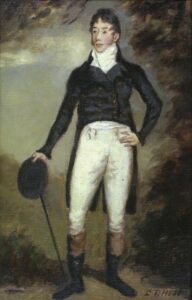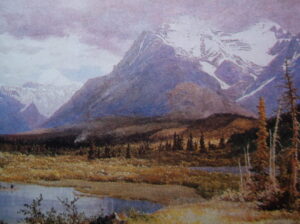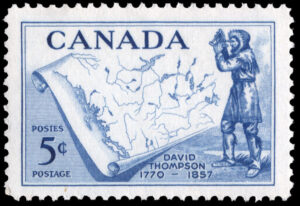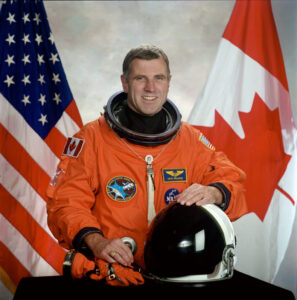REMARKABLE CORNWALL – Explorers, Adventurers and One Astronaut
As we are fast approaching THE SEEKER’S local discovery month, this issue’s REMARKABLE series will look SD & G ‘s world and other worldly explorers and adventurers.

Fur trader John MCDONALD of GARTH, was one of our most flamboyant adventurers. Born in Scotland, he was bound as a clerk to the Montreal based North West (fur trade) Company in 1791. Possessing a fiery temperament, and sensitive about his slightly crooked right arm, he issued two duelling challenges within his first six months here. Never losing his truculence, he carried a pair of pocket pistols and a sword while working in the fur trade. This assertiveness led him to earning a wintering partnership with the Nor’Westers, the respect of the French Canadian voyageurs and enabled him to direct the construction of two fur trading posts in the Canadian Rockies.
One of McDonald’s most audacious feats took place during the War of 1812, when he sailed through the Straits of Magellan, to seize the American at Fort Astoria in present day Oregon. Fortunately for the Americans, the fort had already been sold, allowing him to take command of the post until he crossed the continent by land to Montreal.
In 1814, he sold his shares in the Company making him a wealthy man and allowing him to establish his laird, Inverarden, east of Cornwall.
SIMON FRASER

With a prestigious university and a 1,375 km long river named after him, fur trader Simon Fraser is Canada’s most famous explorer.
The son of Loyalist parents, after the American Revolution Fraser was apprenticed to the Northwest Co., where he became a partner. In 1805, he was directed to find the mouth of the Columbia River to shorten the overland route to Fort William (Thunder Bay). With the essential aid of Indigenous guides, he and his men became the first Europeans to cross modern day Canada by land in 1808.
In 1818, he retired to St. Andrews where he married Catherine Macdonell with whom he had five sons and three daughters that survived to maturity. Here, he built a saw and grist mill.
He served as a Captain in the Militia during the Rebellions of 1837 – 38. Afterwards, an accident that injured his knee prevented him from effectively carrying on his business. He died in 1862, followed a day later by the death of his wife.
In 1921, the Hudson’s Bay Company dedicated a monument to Fraser in the local cemetery, which I understand is now being refurbished.

DAVID THOMPSON Known as “Koo-Koo-Sint,” the stargazer, by some Indigenous tribes for his intense interest in the sky to find is way in the wilderness, David Thompson travelled 90,000 km across Canada to map 4.9 million square km of the Canadian West.
Born in London, England of Welsh descent, Thompson’s mother was widowed young, qualifying her to enlist David in a “charity school. Here, he learned the rudiments of navigation and surveying, preparing him for a career in the Royal Navy, or as events turned out a career with the Hudson’s Bay Company at age 14. Eventually joining the Nor’Westers, his “Map of the N.W. Territory of the Province of Canada from B.C.’s Fraser River to Lake Superior,” published in 1814, was so accurate it served as the basis for Canadian government maps for more than a century.
His map completed, Thompson moved to Williamstown, presumably to be near other retired Nor’Westers in 1815.
ASTRONAUT – DR. DAFYDD “DAVE” WILLIAMS.

While Astronaut Dave Williams wasn’t strictly speaking from SD & G, I am going to follow good Glengarry tradition and include him as being from here. In 1991, his mother Isobel K. (Berger) Williams, lived in Williamsburg, and therefore he “should have!” A reporter for a July 1998 edition of the Iroquois “Chieftain,” wrote: “Well over 150 South Dundas residents were flying high with excitement as Williamsburg Astronaut Dave Williams launched into a slide presentation of his (April 1998) mission in space,” at Morrisburg’s Civic Centre.
Born in Saskatoon of Welsh descent, Dave Williams attended McGill University, earning several degrees that led him to becoming a Medical Doctor who went on to specialize in neuroscience. In 1992, Williams was selected to become a member of the Canadian Space Agency, where he was appointed Manager of Space Medicine. Three years later, Williams entered NASA’s astronaut training programme. By 1998 he concentrated on investigating the effects of microgravity on the neuro system. In the same year he was named Mission Specialist and Crew Medical Officer for Space Shuttle Columbia’s STS-90, 16 day flight, where he conducted life science experiments.
Altogether Williams has spent 28.66 days in space, and taken three spacewalks for a total of 17 hours and 47 minutes. He left the space programme in 2008 to eventually become a healthcare and aerospace consultant. For his contributions, Williams has received numerous honourary doctorates, and awards including the Order of Canada.




